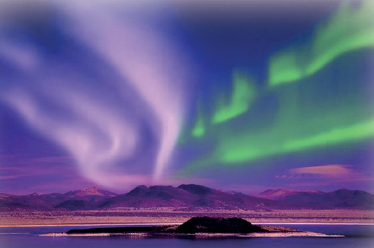THE MYSTERIOUS NORTHERN LIGHTS
The dancing lights of the aurora borealis have fascinated people for centuries. Many have travelled thousands of miles to see this natural light show. Most of them watch the spectacle in awe but have little grasp of how it came to be. Over the years, though, scientists have slowly been able to piece together what creates this natural wonder.
On the surface of the Sun, the temperature is extremely high—thousands of degrees Celsius. The area is teeming with magnetic activity. As the heat causes gas molecules to explode, particles are thrown from the Sun’s surface. These particles are then blown into the Sun’s atmosphere by solar winds, which push them further into space and towards Earth.
The Earth’s magnetic field deflects most of the charged particles and absorbs others. However, some particles break free through holes in the magnetic field and head towards the Earth’s atmosphere. The Earth’s magnetic field is weaker at the North and South poles, so some charged particles enter the Earth’s atmosphere there and collide with gas particles. These collisions give off the light that we recognise as the northern lights. They also create their southern counterpart, the aurora australis, or southern lights.
Pale green is the most common colour seen in the aurora. It is produced by oxygen molecules about sixty miles above the Earth’s surface. Red auroras are created by oxygen molecules that collide at a higher altitude. Intense solar activity must occur for red auroras to be seen. Collisions with the nitrogen gas that happen when lower oxygen levels are present creates a blue aurora. Pink, yellow and violet have also been reported. Variations of colour result from the different types of gas particles as well as the altitudes at which they collide.
Scientists recently discovered that aurora borealis activity peaks every eleven years. The next peak will be in 2024, but the northern lights can be observed in the far north on any clear night. When will you make your trip north to see the aurora borealis?

